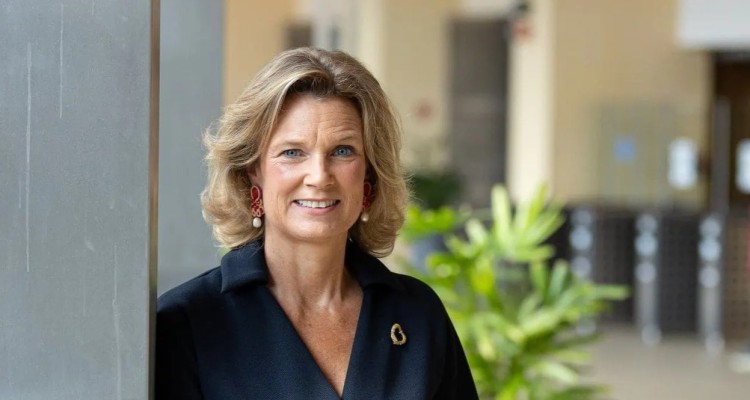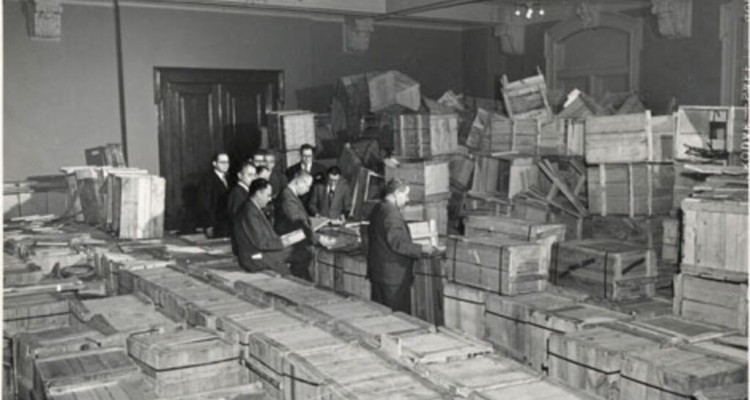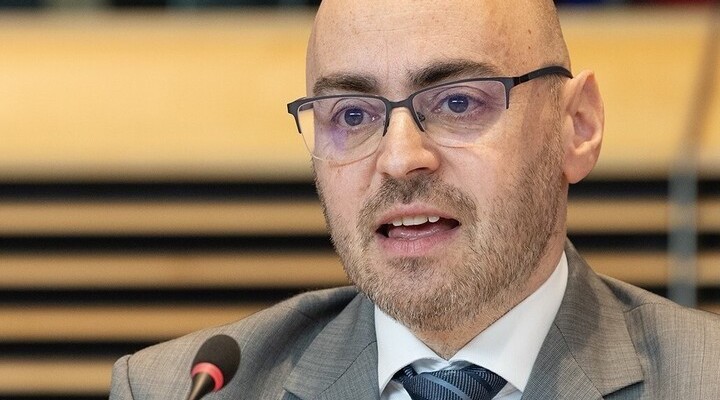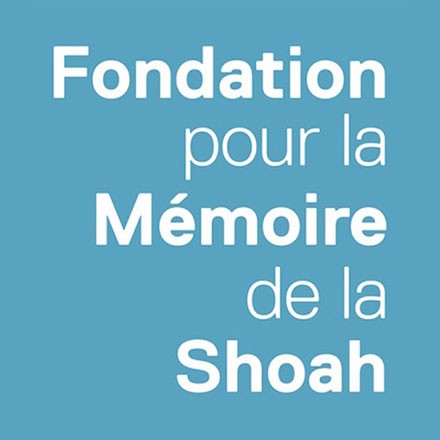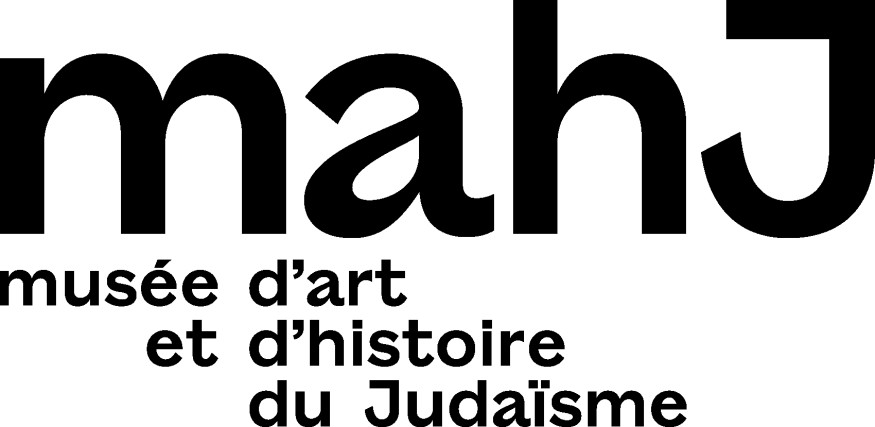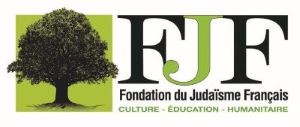Maya Katznelson founded the “Centre for Belarusian-Jewish Cultural Heritage” (BJCH centre) in 2019, with the aim of collecting and exhibiting the rich Jewish cultural heritage of Belarus. One of the goals of the centre, after having already hosted various events, is to create a Belarusian Jewish Museum, a space that also combines research and education. Maya Katznelson had to leave her country because of the events that are currently shaking her region. She spent two months in residence at the Museum of Jewish Art and History (mahJ) in Paris and is temporarily living in London. On the occasion of her stay in Paris, she presented some of her past exhibitions and spoke about the ambitions of the centre for which she is fighting.
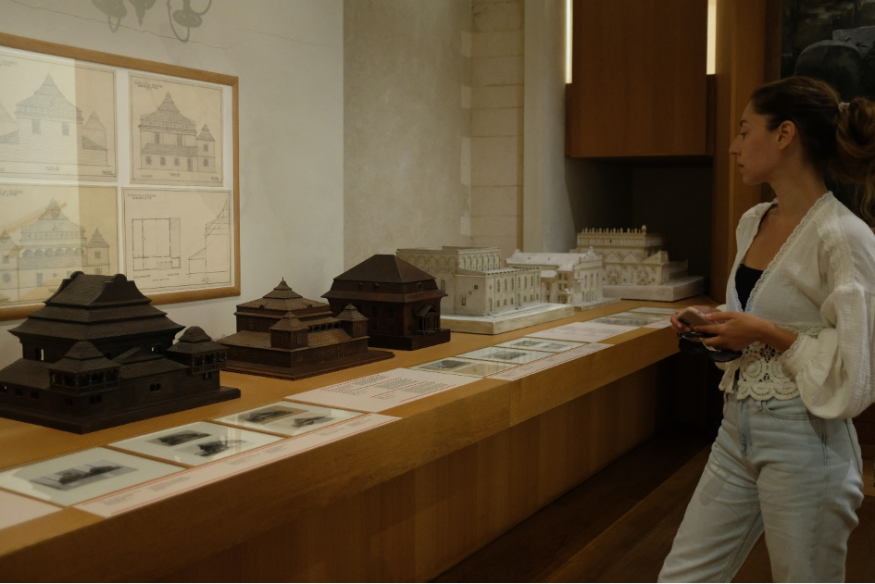
Two years ago, in August 2020, the world seemed to discover the existence of a country in Europe, Belarus – a country that inherited its borders from the Soviet Republic of Belarus. On the evening of a new election to renew the mandate of President Aleksandr Lukashenka, who has been in power since 1994, the streets of the country’s cities are filled with crowds dressed in white. Journalists, dispatched to the country, discovered a young and connected urban population, capable of mobilising quickly, pushing back the clichés of a country living under a bell jar and smelling of mothballs. This interest in Belarus and its youth initiatives in the summer of 2020 seems very distant today. It only lasted for one summer, not much more.
Maya Katznelson embodies this youth. Born in Minsk in 1988, she has been a curator for international cultural projects for more than ten years. And as far back as she can remember, she has always been interested in her family history. She doesn’t know much about her mother side. Her grandmother was probably Belarusian and never wanted to say much about her life; her grandfather was Spanish, evacuated from Bilbao as a child in 1937 by the Soviets during the Spanish Civil War. Her father’s family is Jewish, “a long Jewish history” she says. For Maya, this story resembles that of so many others in Soviet Belarus: mixed families, made of secrets and fear.
The Katznelson family always stayed in Belarus and never changed their name – something Maya emphasises. At the time of the great Jewish migration of the 1990s[1], only her father decided not to emigrate. Maya, too, would have preferred never to leave, but what she modestly calls “circumstances” led her to leave her country in March 2022. She does not want to, nor can she, argue about it.
In 2019, Maya Katznelson founded the “Centre for Belarusian Jewish Cultural Heritage”, in order to promote, both inside and outside Belarus, the living Jewish culture that was born in this territory. This territory is the one that is most often seen as the one of the borders, of the periphery, wedged between Russia on one side and Poland on the other, Lithuania in the north and Ukraine in the south. Yet this is a place that the poet Moshe Koulbak[2]named “Raysn[3]”, we can also look at it with its specificities as the centre of Jewish life, the centre of revolutionary utopias and avant-gardes, the centre of a world whose capitals would be Minsk and Vitebsk. This territory where, in the first part of the twentieth century, blood never stopped flowing, the blood of Jews, but not only.
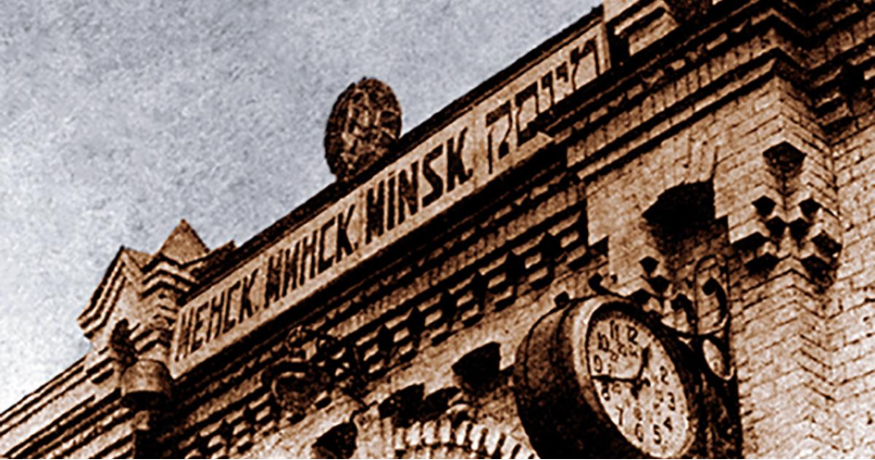
Maya Katznelson has long had the desire to create a Jewish museum in Belarus that would be worthy of this presence in the past and its legacy today. She is deeply convinced that Belarus must understand its history as a melting pot of “nationalities” and that it must keep track of it. In Belarus, and especially in its capital Minsk, the Jewish presence is everywhere and nowhere. It is visible only to those who know how to see it. We are now far from the city whose train station once proudly displayed its name in Russian, Belarusian, Polish and Yiddish.
It was in Paris, in the courtyard of the Museum of Jewish Art and History (mahJ), where Maya is in residence, that we met. Maya would like to return to her country one day, as soon as possible, so that a Jewish museum can be created there.
In the meantime, her projects have not been suspended, but she has to give them a new form, dictated by the situation: this hybrid and virtual form that the Covid epidemic has made more familiar. In this interview, she recounts the initiatives she has carried out so far in a context where women and men of goodwill come together to raise their heads, despite the circumstances. She tells of her wish to invent a museum that would tell a story that is not necessarily tearful, nor necessarily nostalgic of a fantasised shtetl, a museum that looks to the future in a country where the Jews, who were in the majority in many cities, have almost completely disappeared.
Lisa Vapné: How did you come to the idea of creating a Jewish museum in Belarus?
Maya Katznelson: This idea has been maturing in me for a very long time. The projects I did before 2018 as a curator were heritage projects, which were about the history of Belarus. The Jewish theme was already very present, or at least I saw it everywhere. For example, when I worked on an exhibition about the beginning of silent cinema in Belarus. I gained experience as a curator and started asking around: why don’t we have a proper Jewish museum in Belarus? People in the country don’t know this history, but we should just tell them. When I was finishing work in Minsk on a large exhibition dedicated to the Soviet Jewish photographer Lev Borodulin, a legend of sports photography, I asked the question again during a discussion with friends: “How come there is no such museum? Its existence would be an inspiration to us all. And a friend replied: “Why don’t you take care of it? That was it. That little sentence was the trigger. A door opened in me and everything went very quickly.
L.V.: However, there are some museums on this theme…
M.K.: Yes, here and there, there are regional museums, but I would say that they are ethnographic museums. This is the case in Mir, for example. These museums have been created thanks to the good will of a few people. Sometimes they are simple rooms in museums or in Jewish communities. Inna Guerassimova in Minsk created in 2002, inside the building of the Jewish Community, the Museum of History and Culture of the Jews of Belarus. In Novogrudok, there is a “Museum of Jewish Resistance” in the Ethnographic Museum[4]. I consider that these initiatives and all this work are absolutely invaluable, but they should be used to build something more fundamental, for a country with such a history, and where the culture is so connected to this Jewish presence. There should be something bigger. For me, this absence represents an injustice in the face of this history; an injustice that has always moved me a lot. I don’t want people to say: “We already have a Jewish museum and that’s enough”. It is very good that there are these museums, but we need one on a different scale, a national museum, linked to educational projects. A museum that people would want to go to, and that would be constantly renewed by the new initiatives it would propose.
L.V.: How did you go from the idea to your first initiatives?
M.K.: In 2018, when this idea of a museum or a centre came up in my head, I started talking about it, talking about the idea with a lot of people, and in doing so it started to take shape, almost magically. I was invited to participate in a program in the US (IVLP – International Visitor Leadership Program) to learn how to work with non-profit organizations through art. In the spring of 2019 we started to have a legal existence and the prospect of opening in the autumn of 2019. At that time, we planned to do a big and beautiful exhibition around the Jewish photographer Mosesi Nappelbaum. We had contacted many potential partners. But it turned out that the director of the Goethe Institute in Minsk, having heard a programme about the exhibition “Amy Winehouse: A Family Portrait” at the Jewish Museum of London, learned that she had Belarusian origins. He then set about bringing the exhibition to Minsk. It was a huge exhibition, which had circulated for several years in different countries, different cities, but it was finished. So he contacted the museum in London and said, “Look, it would be so important for Minsk to have this exhibition. In the end, they agreed that the last exhibition would be in Minsk. A kind of return to sender.
What was remarkable was that it wasn’t really an exhibition about Amy Winehouse, queen of pop. The exhibition was more about her family roots, where the Winehouses came from and always remembered that they were from Minsk. Even though the family never returned to Belarus, having left in the 1890s, the country was still very important to them. The exhibition was created in collaboration with his older brother Alex and we had to adapt it – especially the explanatory panels – to the Belarusian context. The day before the opening, we even received the Winehouse family documents from the national historical archives.
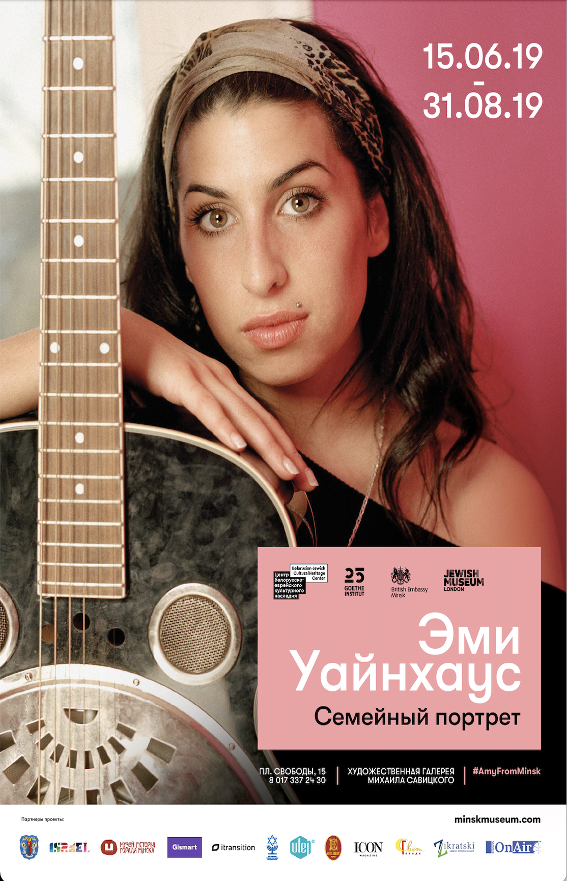
But for us, it was a great opportunity, as we opened our centre, to become the main organisers and partners of this event. It was the first time in 130 years that the Winehouse family had returned to the country of their great-grandfather and the exhibition was very well received, with lectures, visits from the Chief Curator of the Jewish Museum in London, members of the Winehouse family, etc. The exhibition was a perfect opportunity to remind Belarussians that there were Jews in the country who left, and to show the British, in this case, what this country looks like from which so many Jews emigrated.
Finally, we organised a big party called “Amy from Minsk”. Many Minskers came dressed in Amy’s style. For us, it was also very important to show that this heritage, this history, can also be told in a very joyful and not at all boring way!
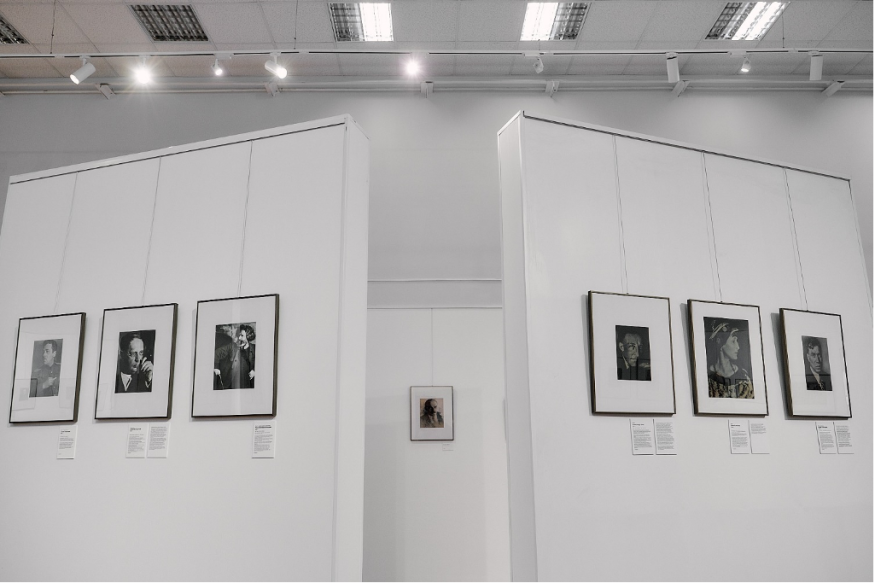
L.V.: The projects then followed in quick succession…
M.K.: Yes, after the closing of the Amy Winehouse exhibition, we opened in the National History Museum in Minsk, in his hometown, the exhibition devoted to the master of photographic portraiture Moissei Nappelbaum, on the occasion of the 150th anniversary of his birth. Although no one in Belarus knows him, he is credited with a gallery of incredible portraits ranging from Lenin to Anna Akhmatova, including all the actors of the cultural and political life of the time. We decided to present one hundred original photographs, focusing on his early work as a photographer in Minsk. The idea of the exhibition, which was entitled “Portrait of an Era”, was to see each photograph as a reflection of an era, which led us to focus as much on the photographer’s work as on those he photographed. On this occasion, we also organised lectures on the history of Belarusian photography, as well as tours of Jewish Minsk.
L.V.: You also rediscovered the artistic group Unovis[5].
M.K.: We planned our Unovis project to coincide with the hundredth anniversary of the founding of this art group from Vitebsk, about which not much was known in Belarus. I didn’t know much about it myself, but when I realised what it meant, I felt as if I had a kind of diamond in my fingers that should shine, and Belarus with it. Unovis is an art group that has fuelled the creation of much contemporary art of this time. It was born in Vitebsk, in the city’s art school. The best of the best artists of the time, the most innovative, came here to Vitebsk[6]. For the exhibition, we partnered with the Museum of History of the Vitebsk Art School[7] which opened in 2018 on the premises of the school founded by Chagall.

The Unovis project was envisioned as a series of important events that would illustrate the different fields that this artistic group impacted. The first step was to create the Khidekel Prize for Innovation and Ecological Decisions in Architecture[8]. Lazar Khidekel was born in Vitebsk in 1904. He is an absolutely incredible architect, the author of the first manifesto of ecological architecture of the 20th century and the first suprematist architect[9]. We awarded the prize at the end of 2019 to Belarus with a lot of publicity around the event: Daniel Libeskind was on the jury and Lazar Khidekel’s son, Mark Khidekel, came especially from New York to present it to the winners. It was a very inspiring gesture for the young generation of Belarusians. When we went to the Union of Architects, they had tears in their eyes and said: this can be the visual identity of Belarus. Because Khidekel’s architecture is absolutely revolutionary, even for us today. But this man and these ideas were born in Vitebsk. The mission we have given ourselves through all these projects is the same: to show our past in a way that nourishes the future. That is why we are calling on new people, young and talented artists who live in Belarus.

L.V.: Can you tell us about your method?
M.K.: It is very important for us to focus on communication around our exhibitions and projects, because when people know almost nothing about a subject, or may be spontaneously sceptical, media coverage helps to attract attention. That’s why we didn’t start by looking for funds to find a place and then open this museum and fill it with a whole bunch of exhibits. Our strategy was different. We chose to fill the gap, the absence, by trying to involve as many organisations and institutions as possible, inside and outside Belarus, in order to establish an international network with which we thought together about this question: how and what Jewish museum can be created in Belarus today? From the beginning, our goal was of course to be the centre from which we wanted to create and develop a Jewish museum in Belarus, but gradually we came to the conclusion that it was necessary to go beyond the simple creation of a museum.
L.V.: One of the specificities of Belarus is that there are no oligarchs, philanthropists or patrons who could finance artistic initiatives. So you have to find the money elsewhere. How could you proceed then, in 2018-2020?
M.K.: Our position has always been to try to establish as many partnerships as possible. As long as it was possible, we set up projects with the public sector, with the big museums of the country, thanks to the support, therefore, of the Ministry of Culture, thanks to international institutions such as the Goethe Institute or thanks to embassies, or to Belarusian companies related to new technologies. Some of our projects would not have been possible, for example, without the support programme of the German Foreign Office. It is only by multiplying these co-operations that we have been able to set up large-scale projects. We did not close any doors and in the end, each partner found its own interest in the projects we proposed.
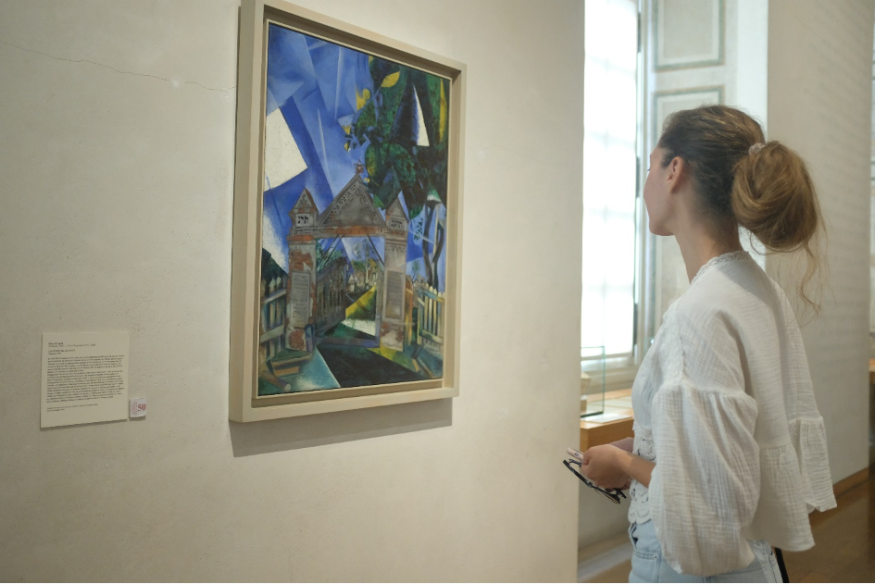
L.V.: Among these partnerships, there were also some from the academic world since you were at the initiative of a big conference which was finally held in June 2021 online…
M.K.: Yes, after a year and a half of work on important artistic projects, it was important to have the support of academics and experts from the academic world. We already had links with the University of Southampton and with the Goethe Institute, so we started to organise the first international conference on the history and culture of the Jews in Belarus by gathering a scientific committee of the best specialists.
We planned this conference for 2020 in Minsk. It was important for us to hold it in Belarus. But in the end it was held online – which is instructive for the future. The event was a success. We had about 700 registrations, which is a lot for a scientific conference. Above all, the conference allowed us to understand where our gaps were. The need for young researchers to be trained on these issues, especially because we don’t have specialised programmes in Belarusian universities on Jewish history. The other striking fact is that the best specialists, or let’s say the presentations that we thought were the best, came from researchers who live outside of Belarus, which is not normal.
That is why we want to organise summer schools and special training courses to prepare young researchers and give them the opportunity to work and stimulate their interest in these issues. We have also set up a working group to think about an innovative online platform alongside the museum, which is all the more necessary as long as the museum does not exist. This working group is led by people from different universities – Southampton, Vilnius, Humboldt, Michigan – and from museums, such as Polin and Paris. So this conference was a very important step.

L.V.: There are many challenges when we look at the state of the Belarusian Jewish heritage: it is either in a poor state of conservation or scattered around the world.
M.K.: Yes, that’s why we also launched a pilot project called Belarus Shtetl. It is a virtual reality reconstruction of the Great Synagogue of Slonim, one of the most important buildings of Jewish architectural heritage in the world, which is in very bad condition. It requires a lot of investment, which is a problem, especially at this time. So we put together a team of professional restorers, artists, researchers and computer scientists to recreate all the murals, all the architectural elements. We also designed a model of the synagogue at its most prosperous time, between the 17th and 19th centuries. Finally, at the same time, we have opened up the possibility of a virtual visit, thanks to virtual reality equipment. It is possible to virtually walk around the synagogue, interact with certain elements, zoom in on them, hear stories about the Jewish history of Slonim or the history of the shtetl, because the synagogue was more than a place of worship, it was a place of life.
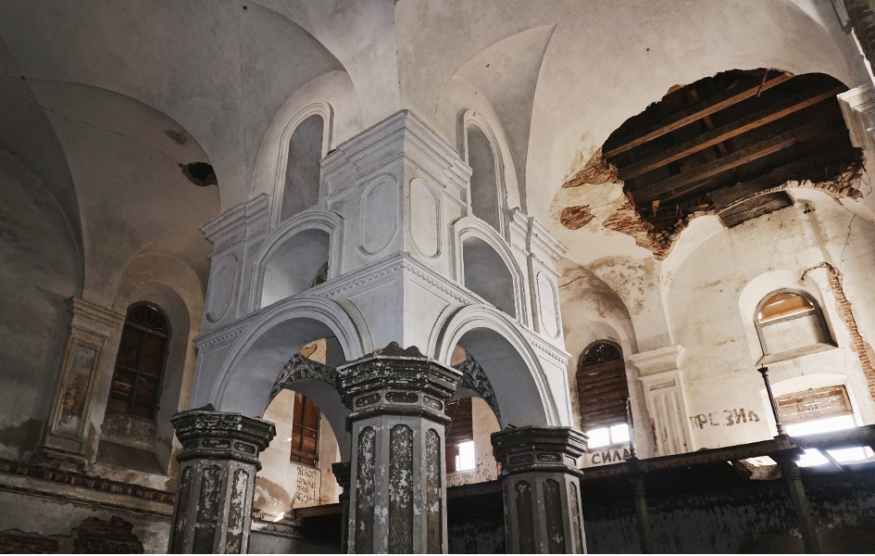
Above all, it is a project that, when we presented it last year, was very successful among the youth. However, it is quite difficult to make a synagogue attractive to the youth! Now we plan to multiply the experience by recreating other synagogues in Belarus, which will also reflect the architectural diversity of the shtetl world, as they are all completely different in style. In the Museum of Jewish Art and History (mahJ) in Paris, for example, there is a wooden model of the Volpe synagogue and together we will create a virtual reality reconstruction of the Volpe synagogue, which could be presented both in the museums and on our online platform.
However, for the time being, we are developing a platform on which there will be an interactive multimedia exhibition linked to different concrete exhibitions in non-virtual museums.
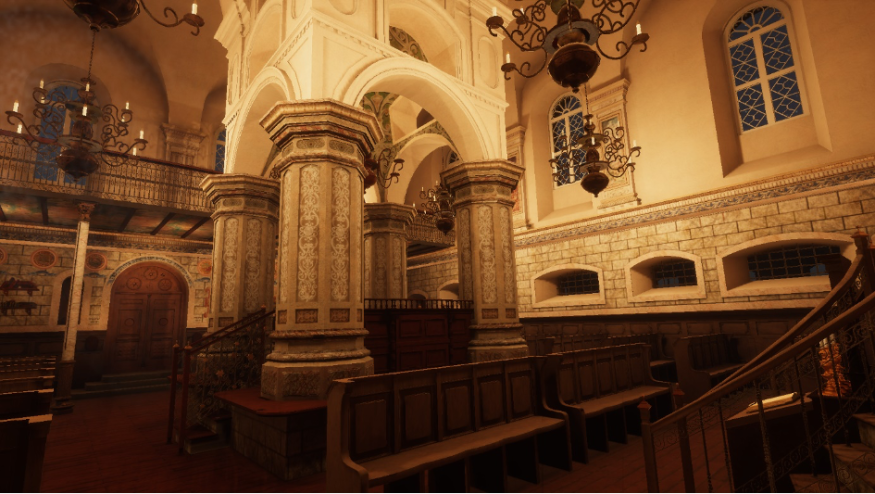
This virtual project is accompanied by a reflection on the redefinition of the classic conception of the museum as a space for the conservation of collections. But, in our case, we have no choice but to redefine it. That is why we are creating this participative online museum which will be able to make links with the different collections in the world.
L.V.: The question of the collections is complex for a museum in Belarus, because if the country saw the birth of very famous artists, and in particular Marc Chagall, their works are in the biggest museums of the world and we do not see how they could be found in Belarus…
M.K.: Yes, the question of collections is complex. First of all, on this platform, we have to make an inventory of this heritage scattered all over the world. The group of experts we have formed will be in charge of collecting and cataloguing all available resources on various subjects related to Jewish history and culture in Belarus. Then, on this basis, we will work out solutions for exhibiting these works: this can be done online or offline, and in different formats, including for example digitisation or borrowing for temporary exhibitions, etc.
L.V.: Have you thought about the question of the return of certain works, about a form of restitution?
M.Y. I don’t think that we should deliberately engage in a fight to obtain the return of works. But what I hope is that many people from the region will spontaneously provide archives, documents, and works.
Interview conducted and translated from Russian by Lisa Vapné
Notes
| 1 | In ten years, the country’s Jewish population dropped, according to official censuses, from 111,977 in 1989 to 27,810 in 1999. Nacional’nyj sostav naseleniâ Respubliki Belarus’i rasprostranennost’ âzykov. Statiščeskij sbornik, Ministerstvo Statistiki i Analiza Respubliki Belarus’, (National composition of the population of the Republic of Belarus and distribution of languages. Collection of Statistics), Minsk, 2001, p.16. |
| 2 | Moshe Koulbak is a Yiddish-speaking writer, born in Smorgon or Smarhon in present-day Belarus. He was one of the Jewish writers arrested and executed in Minsk in 1937. |
| 3 | You can listen to the poem Raysn (“Belarus”) published in 1922 on this site read in Yiddish and translated into English. https://yiddishkayt.org/raysn/ |
| 4 | http://navagrudak.museum.by/node/39064, website in Belarusian, Russian and English. |
| 5 | Unovis as Utverditeli Novogo Iskusstva, consolidators of a new art. |
| 6 | Claire Le Foll, The Vitebsk Art School (1897-1923). Éveil et rayonnement autour de Pen, Chagall et Malevitch, L’Harmattan, 2002. |
| 7 | https://www.vitebskavangard.by/muzej-istorii-vnhu/, the website is in Russian. |
| 8 | https://bjch.center/lazarkhidekelaward/eng |
| 9 | An artistic movement originating from cubism that uses only geometric elements and colour contrasts in its production. |
